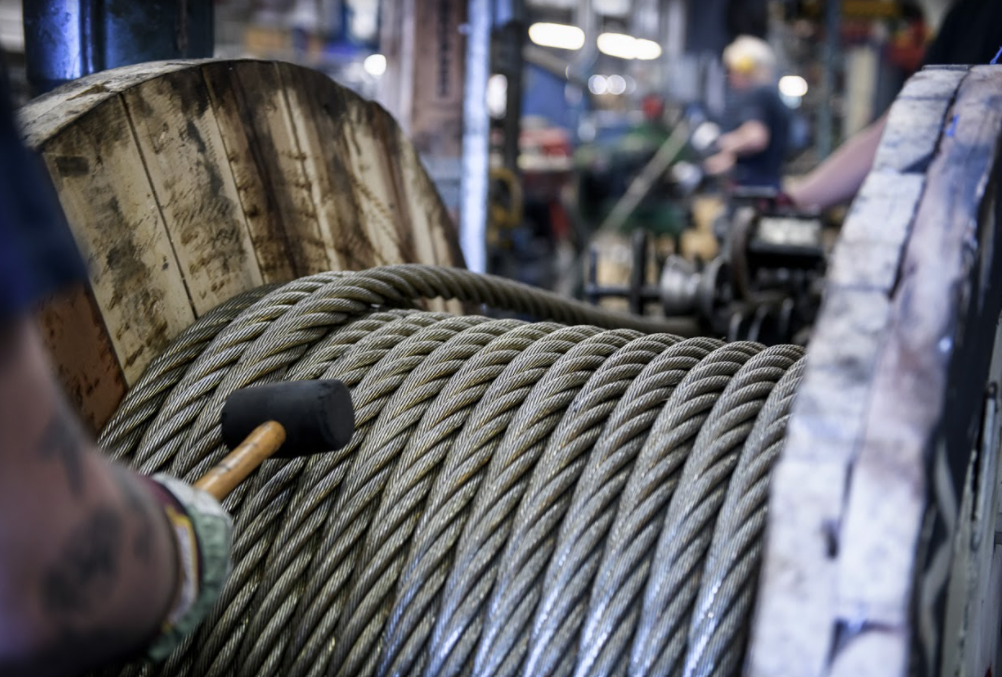Around the core wire are the strands. A strand consists of an x-number of steel wires, which are wound helically around the core strand. The number of strands varies from one wire rope to another, but by far most steel wire ropes consist of six strands.
Lay method
The strands are closed around the core wire in a certain direction. We call this the lay direction. The lay direction is equal or opposite the lay direction of strands around the core wire. There are two types: lang’s lay or regular lay.
Lang's lay
In lang’s lay, the lay direction of the strands and the wires in the strands are the same. The strands are closed around the core strand from bottom left to top right. Or vice versa. The wires are the same.
Characteristics:
- Has a tendency to rotate outward.
- Only suitable for situations where the ends have a fixed, non-rotation attachment point and the load cannot rotate. For example, counterweights at locks.
- With a lang’s lay rope, the outer wire lies on the surface over a longer length, which reduces the surface pressure. Under the right conditions, this extends the life span.
Regular lay
In the regular lay, the lay direction of the strands is opposite to the lay direction of the wires in the strands. The strands are closed around the core wire from bottom right to top left. The strands from bottom left to top right. The other way around is also possible.
Characteristics:
- Rotates out less than a lang’s lay wire rope.
- More resistant to distortion than a lang’s lay wire rope.
- A regular lay wire rope is more resistant to external influences, such as destruction or damage.
Read more
Knowledge articles
Discover the main concerns of steel wire ropes:
- The history of steel wire rope
- The composition of steel wire ropes
- End connections
- Breaking load, usage rate and workload
- How corrosion affects steel wire ropes

Services
Discover how Mennens can support you:




